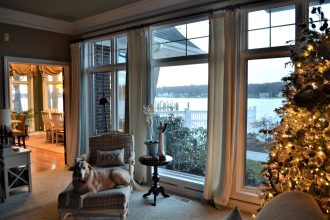Your roof plays a crucial role in preserving the integrity and safety of your home. It shields you from the unpredictable elements and helps maintain a comfortable living environment. Many homeowners overlook the signs that indicate their roof may need repairs, often postponing necessary action until problems escalate into costly disasters. Understanding these warning signals is vital for maintaining your home. Knowing what to look for can save you from significant headaches and expenses down the line.

Visible Leaks and Water Damage
One of the most direct and concerning indicators that your roof needs repair is the presence of leaks. If you notice water stains on your ceiling or walls, this could be a clear sign that roof shingles are damaged or missing, allowing water to seep into your living spaces. Even small leaks can lead to larger issues, including mold growth and structural damage, so they shouldn’t be ignored.
Ensure you regularly inspect your attic and ceiling areas for signs of moisture or water accumulation. If you detect damp spots or notice peeling paint around fixtures, consider it a cue to evaluate your roof. Ignoring these signs can lead to more extensive renovations, requiring you to tackle not just the roof but potentially interior damages as well.
Missing or Damaged Shingles
Another significant sign that you might need roof repairs is the condition of your shingles. Shingles can suffer from wear and tear due to various weather conditions like heavy rain, snow, and strong winds. If you see cracked, curled, or missing shingles while assessing your roof, it is vital to address these issues, as the Rhino Roofing team suggests. Prompt repairs can exponentially extend the lifespan of your roof and save you from a complete replacement.
Regular professional inspections take this a step further, offering an expert’s assessment of your roof’s condition. Technicians can pinpoint vulnerable areas and suggest repairs that may not be visible to the untrained eye. Investing in a reliable service can help ensure your home remains watertight and efficient.
Granules in Gutters
If you frequently clean your gutters, you might notice granules from your shingles. These granules help protect against weather elements, but as roofs age, the granules begin to loosen and wash away. Finding a significant amount of granules in your gutters is indicative that your roofing material is deteriorating. Loss of these granules compromises the shingles, making them less effective and paving the way for leaks and exposure to the elements.
Pay close attention to this detail during regular home maintenance checks. If you spot an increased volume of granules, it’s advisable to consult a roofing professional to evaluate the severity of the issue. Proactive measures can mitigate the need for more extensive repairs in the future, helping preserve your roof’s structure and efficiency.
Age of the Roof
The age of your roof is an important factor in determining its health. Most roofs typically have a lifespan of about twenty to twenty-five years, depending on the materials used. If your roof is nearing this age, it might be time to consider a thorough inspection. Even if there are no obvious signs of trouble, aging materials can become less effective and more prone to damage from weather conditions.
Understanding the average lifespan of your roofing material can provide insights into your maintenance schedule. Whether asphalt shingles or metal, each type has different durability and maintenance requirements. A knowledgeable roofing expert can assist in planning comprehensive maintenance routines that keep your home safe and insulated.

Taking the time to recognize these warning signs can dramatically impact the longevity of your roof. Waiting until problems escalate may lead to costly repairs or even require complete roof replacement. Homeowners should adopt a proactive approach by regularly inspecting their roofs and consulting professionals when necessary. By addressing potential issues early, you preserve the safety and comfort of your living environment.












